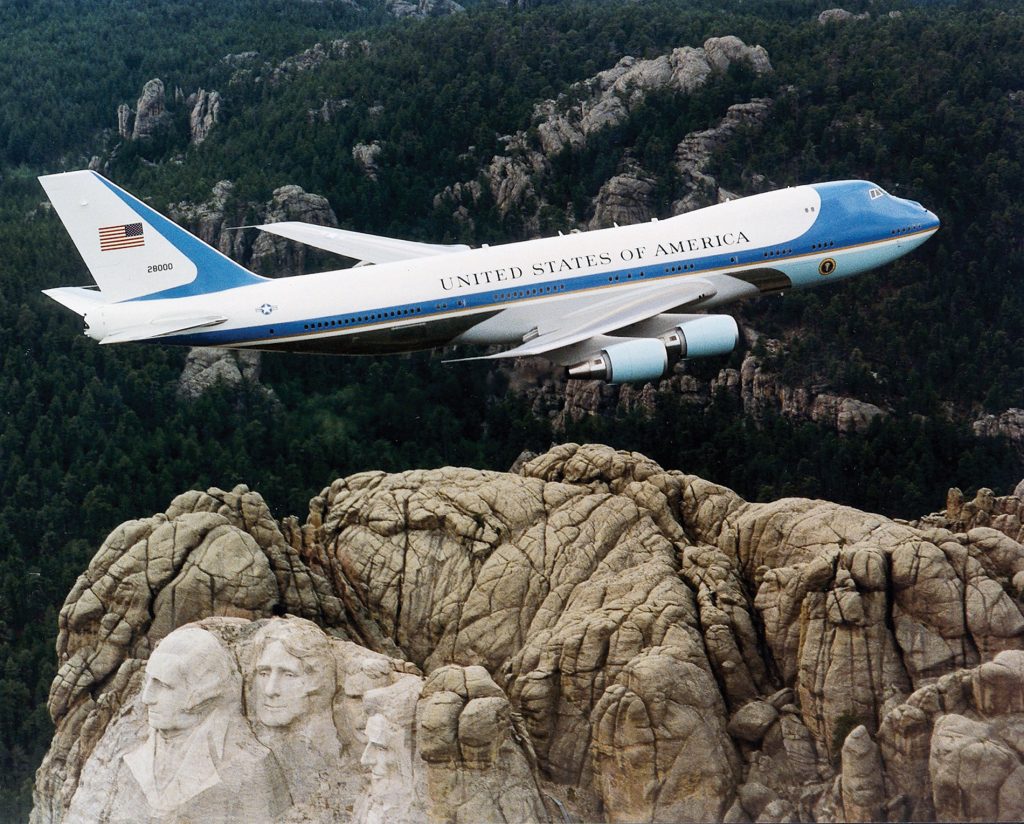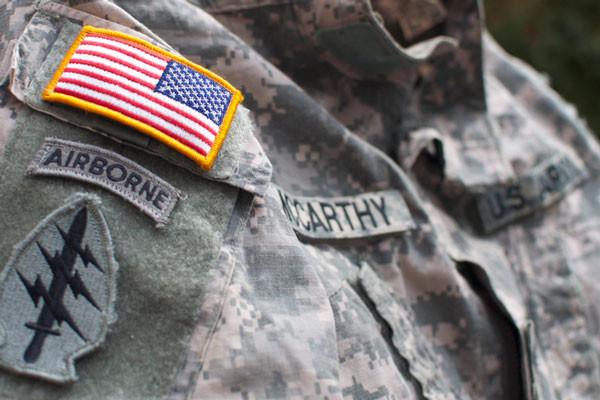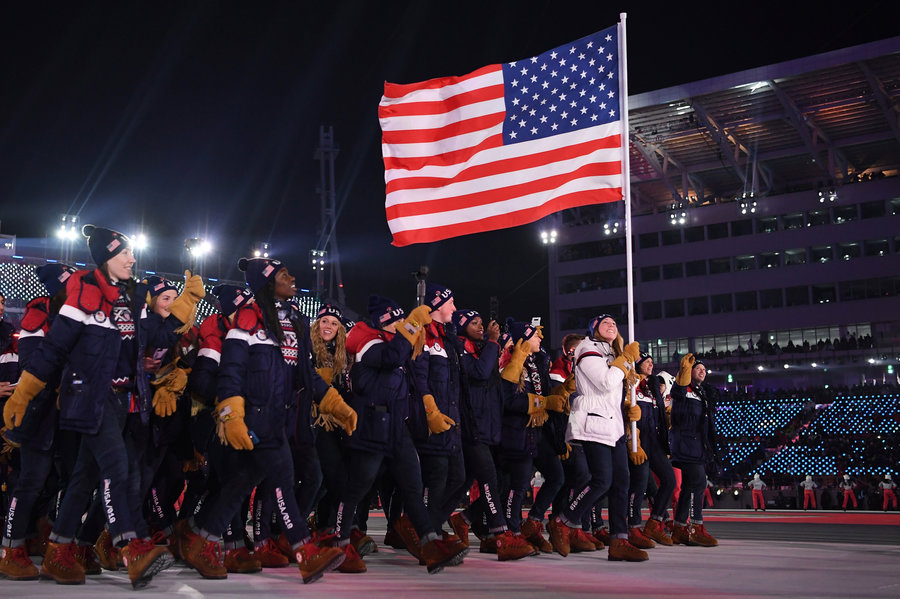The Backward American Flag

Pictured above is a pretty fantastic image — Air Force One flying over Mount Rushmore. It’s basically as much America as you can get in a photo; okay, maybe a bald eagle could have been perched on Washington’s nose or on Jefferson’s head. Regardless, given the context — that’s the President’s plane! — you’d expect every little detail to be right. And yet, something seems amiss.
The flag — why is it backward?
In general, when we think of the American flag, it is positioned with the canton — the blue field with the 50 stars — in the upper-left. That’s true whether the flag is displayed horizontally or hung vertically, as seen here. But in the case of Air Force One’s tailfin, that isn’t the case — the canton is on the upper-right. And that’s true in other contexts as well. Below, you’ll see the “backward” flag on the sleeve of an American soldier, and it’s also common on sports uniforms, as discussed here (although in the case cited, the team went a bit overboard).

So, no, the flag isn’t actually backward. It’s just missing something — a flagpole.
Imagine that the flag was being carried forward, say, into battle or leading an Olympic delegation. The flagbearer would be carrying a flagpole, and the side of the flag with the stars would be anchored to that pole. If the flagbearer ran past you and you were on his or her right, the flag would appear like the below from the 2018 Games.

That’s the effect the “backward” flag is trying to achieve. One fan site dedicated to the flag asked the Department of Defense to confirm this, and the DOD replied by citing an Army regulation (670-1) and stating the following:
The regulation states that when authorized for application to the proper uniform the American flag patch is to be worn, right or left shoulder, so that “the star field faces forward, or to the flag’s own right. When worn in this manner, the flag is facing to the observer’s right, and gives the effect of the flag flying in the breeze as the wearer moves forward.
And the same logic is applied in the other contexts, too. For Air Force One, that means that the right side of the tailfin, as seen above, has the flag revised, but the left side, as seen here, has it facing as you’d expect.
Bonus fact: America’s national anthem, the Star-Spangled Banner, is about the American flag, and specifically about the one flying above Fort McHenry after American troops repelled the British in the Battle of Baltimore. The actual flag has been preserved, somewhat, and is now on display at the Smithsonian, as seen here. If you count the stripes, you may detect something odd — there are 15 stripes instead of the usual 13. Today, the 13 stripes symbolize the 13 original colonies, but that wasn’t always the case. When Vermont and Kentucky were admitted into the Union, the flag expanded to 14 and then 15 stripes. But that was reverted in 1818, as it became clear that adding more and more stripes could quickly become unworkable.
From the Archives: Pledging Allegiance: The history of the U.S. Pledge of Allegiance.
